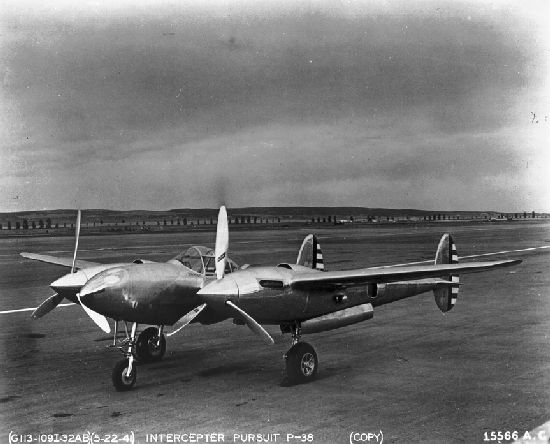
 27 January 1939: First Lieutenant Benjamin Scovill Kelsey, Air Corps, United States Army, made the first flight of the prototype Lockheed XP-38 Lightning, serial number 37-457, at March Field, Riverside County, California.
27 January 1939: First Lieutenant Benjamin Scovill Kelsey, Air Corps, United States Army, made the first flight of the prototype Lockheed XP-38 Lightning, serial number 37-457, at March Field, Riverside County, California.
This was a short flight. Immediately after takeoff, Kelsey felt severe vibrations in the airframe. Three of four flap support rods had failed, leaving the flaps unusable.
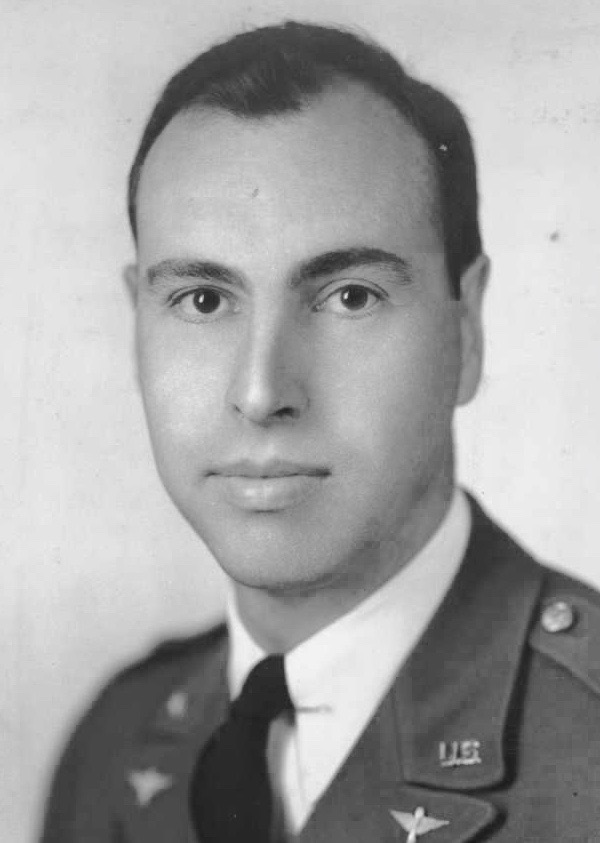
Returning to March Field, Kelsey landed at a very high speed with a 18° nose up angle. The tail dragged on the runway. Damage was minor and the problem was quickly solved.
Designed by an engineering team led by Hall L. Hibbard, which included the legendary Clarence L. “Kelly” Johnson, the XP-38 was a single-place, twin-engine fighter designed for very high speed and long range. It was an unusual configuration with the cockpit and armament in a center nacelle, with two longitudinal booms containing the engines and propellers, turbochargers, radiators and coolers. The Lightning was equipped with tricycle landing gear. The nose strut retracted into the center nacelle and the two main gear struts retracted into bays in the booms. To reduce drag, the sheet metal used butt joints with flush rivets.
The prototype had been built built at Lockheed’s factory in Burbank, California. On the night of 31 December 1938/1 January 1939, it was transported to March Field aboard a convoy of three trucks. Once there, the components were assembled by Lockheed technicians working under tight security.
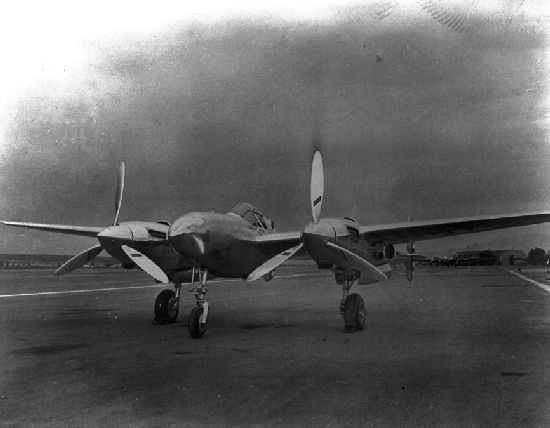
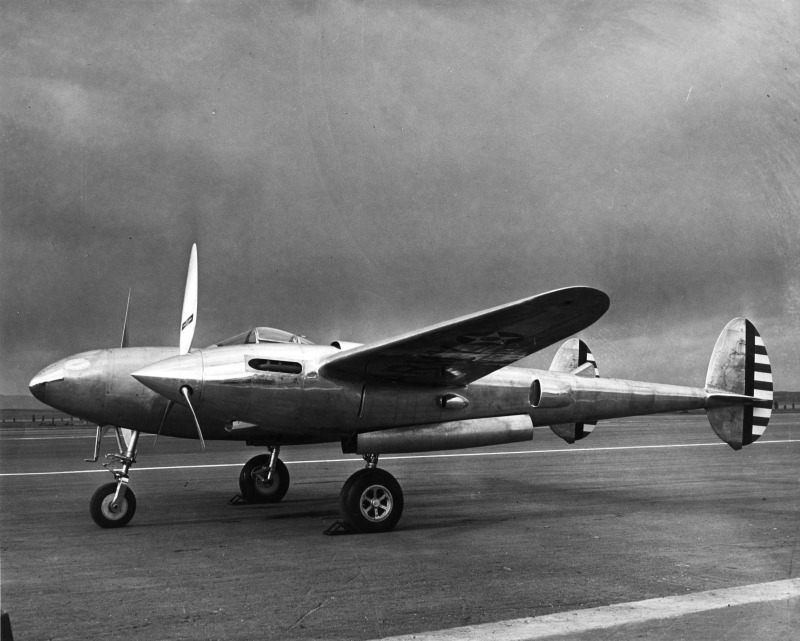
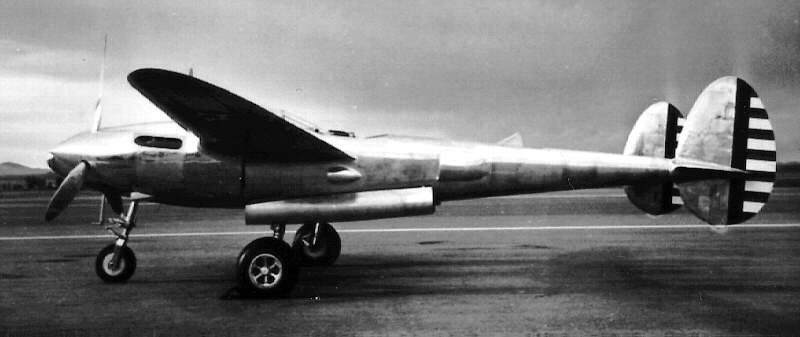
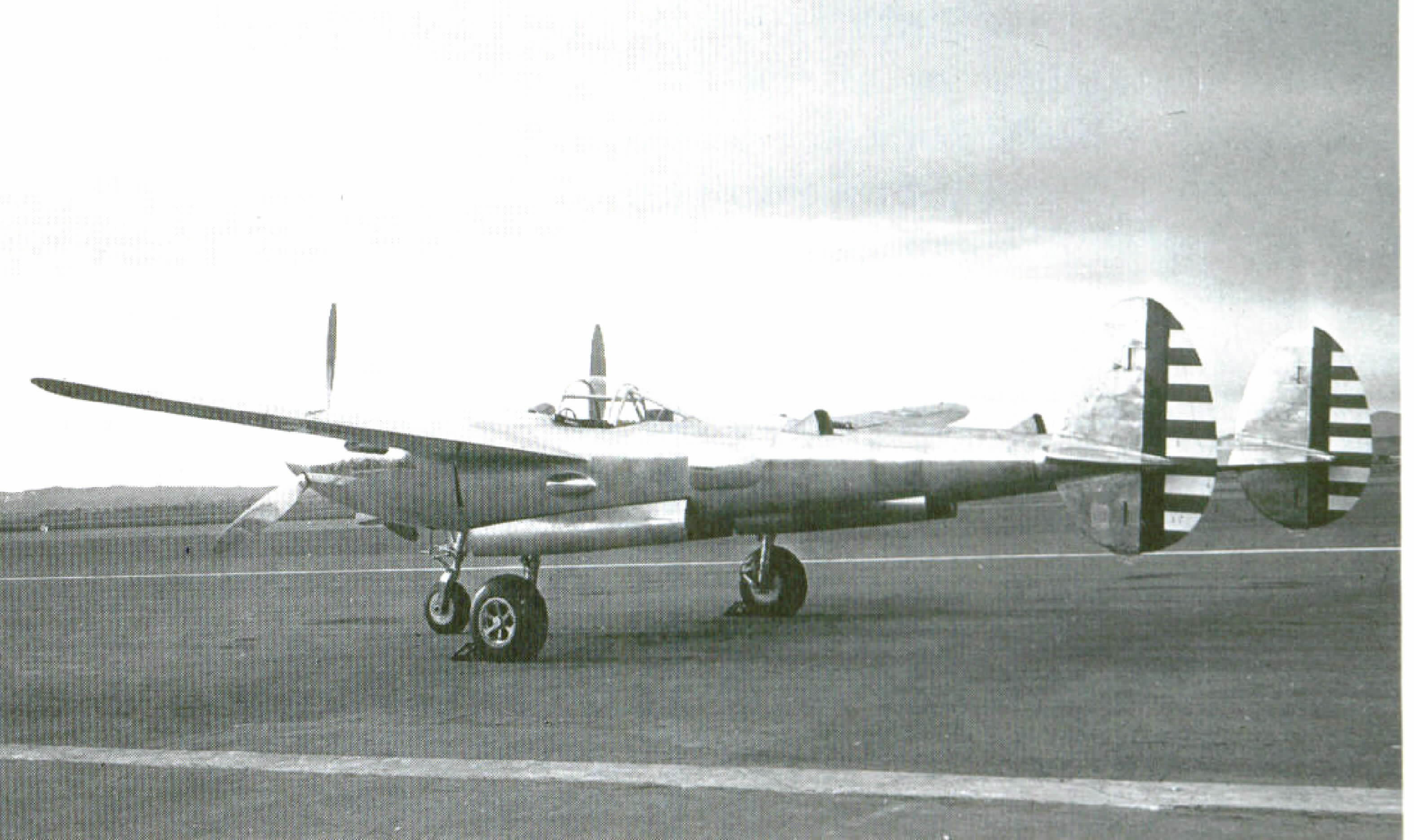
The XP-38 was 37 feet, 10 inches (11.532 meters) long with a wingspan of 52 feet (15.850 meters) and overall height of 12 feet, 10 inches (3.952 meters). Its empty weight was 11,507 pounds (5,219.5 kilograms). The gross weight was 13,904 pounds (6,306.75 kilograms) and maximum takeoff weight was 15,416 pounds (6,992.6 kilograms).
 The Lightning was the first production airplane to use the Harold Caminez-designed, liquid-cooled, supercharged, 1,710.60-cubic-inch-displacement (28.032 liter) Allison Engineering Company V-1710 single overhead cam 60° V-12 engines. When installed on the P-38, these engines rotated in opposite directions. The XP-38 used a pair of experimental C-series Allisons, with the port V-1710-C8 (V-1710-11) engine being a normal right-hand tractor configuration, while the starboard engine, the V-1710-C9 (V-1710-15), was a left-hand tractor. Through a 2:1 gear reduction, these engines drove the 11-foot (3.353 meters) diameter, three-bladed Curtiss Electric variable-pitch propellers inward to counteract the torque effect of the engines and propellers. (Viewed from the front of the airplane, the XP-38’s starboard propeller turned clockwise, the port propeller turned counter-clockwise. The direction of rotation was reversed in the YP-38 service test prototypes and production P-38 models.) The engines have long propeller gear drive sections to aid in streamlining aircraft, and are sometimes referred to as “long-nose Allisons.”
The Lightning was the first production airplane to use the Harold Caminez-designed, liquid-cooled, supercharged, 1,710.60-cubic-inch-displacement (28.032 liter) Allison Engineering Company V-1710 single overhead cam 60° V-12 engines. When installed on the P-38, these engines rotated in opposite directions. The XP-38 used a pair of experimental C-series Allisons, with the port V-1710-C8 (V-1710-11) engine being a normal right-hand tractor configuration, while the starboard engine, the V-1710-C9 (V-1710-15), was a left-hand tractor. Through a 2:1 gear reduction, these engines drove the 11-foot (3.353 meters) diameter, three-bladed Curtiss Electric variable-pitch propellers inward to counteract the torque effect of the engines and propellers. (Viewed from the front of the airplane, the XP-38’s starboard propeller turned clockwise, the port propeller turned counter-clockwise. The direction of rotation was reversed in the YP-38 service test prototypes and production P-38 models.) The engines have long propeller gear drive sections to aid in streamlining aircraft, and are sometimes referred to as “long-nose Allisons.”
The V-1710-11 and -15 had a compression ratio of 6.65:1. They had a continuous power rating of 1,000 horsepower at 2,600 r.p.m. at Sea Level, and 1,150 horsepower at 2,950 r.p.m. for takeoff. The combination of a gear-driven supercharger and an exhaust-driven General Electric B-1 turbosupercharger allowed these engines to maintain their rated power levels to an altitude of 25,000 feet (7,620 meters).
The -11 and -15 were 7 feet, 10.46 inches (2.399 meters) long. The -11 was 3 feet, 6.59 inches (1.082 meters) high and 2 feet, 4.93 inches (0.7348 meters) wide. It weighed 1,300 pounds (589.7 kilograms). The -15 was 3 feet, 4.71 inches (1.034 meters) high, 2 feet, 4.94 inches (0.7351 meters) wide, and weighed 1,305 pounds (591.9 kilograms).
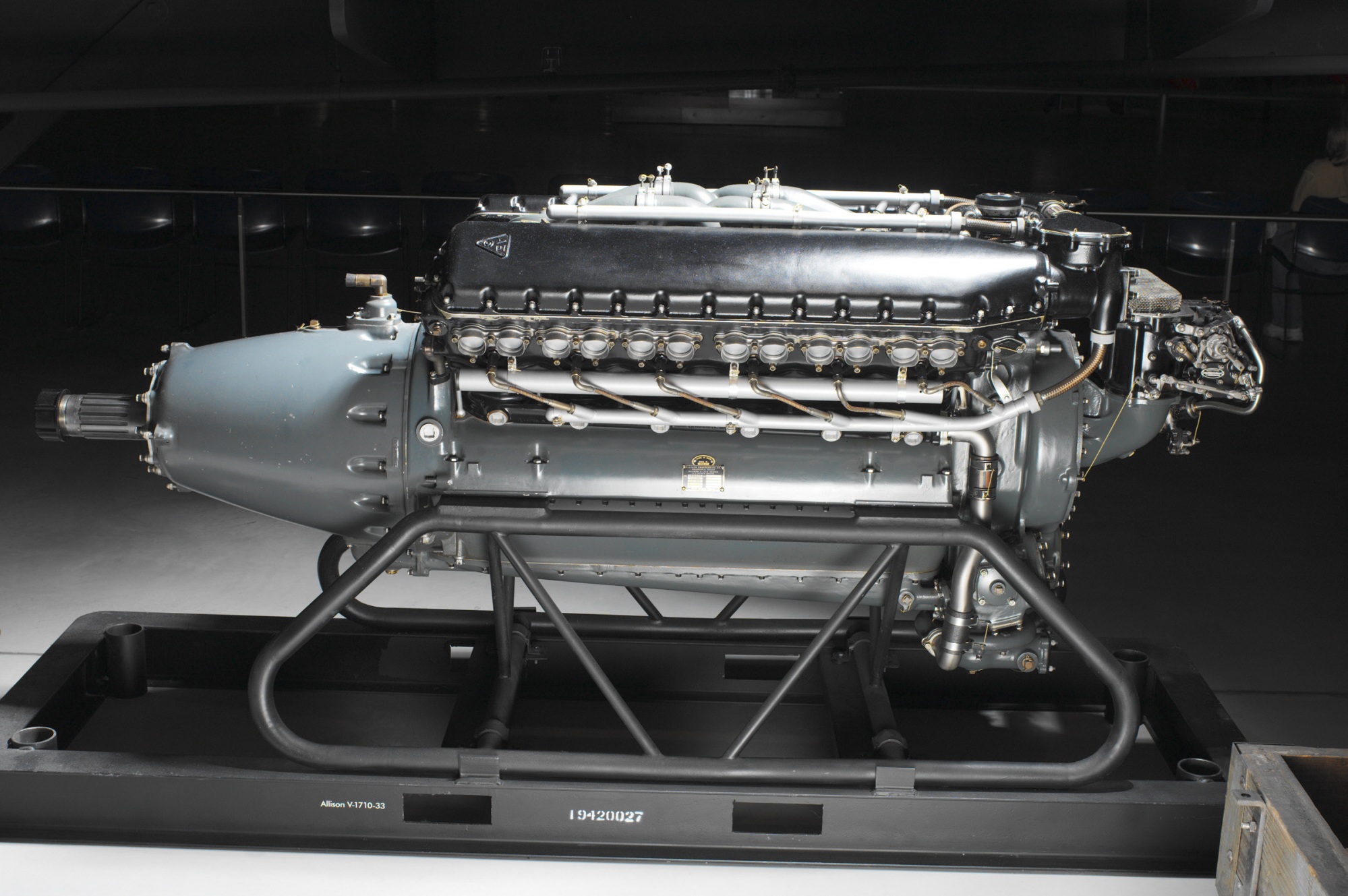
The XP-38 had a maximum speed of 413 miles per hour (664.66 kilometers per hour) at 20,000 feet (6,096 meters) and a service ceiling of 38,000 feet (11,582.4 meters).
The XP-38 was unarmed, but almost all production Lightnings carried a 20 mm auto cannon and four Browning .50-caliber machine guns grouped together in the nose. They could also carry bombs or rockets and jettisonable external fuel tanks.
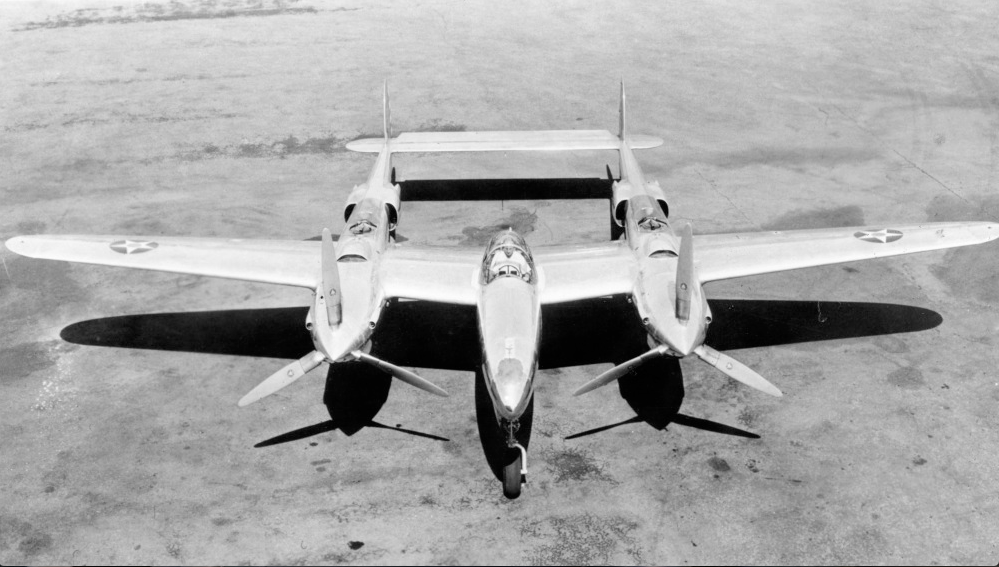
The prototype XP-38 was damaged beyond repair when, on approach to Mitchel Field, New York, 11 February 1939, both engines failed to accelerate from idle due to carburetor icing. Unable to maintain altitude, Lieutenant Kelsey crash landed on a golf course and was unhurt.
Testing continued with thirteen YP-38A pre-production aircraft and was quickly placed in full production. The P-38 Lightning was one of the most successful combat aircraft of World War II. By the end of the war, Lockheed had built 10,037 Lightnings.
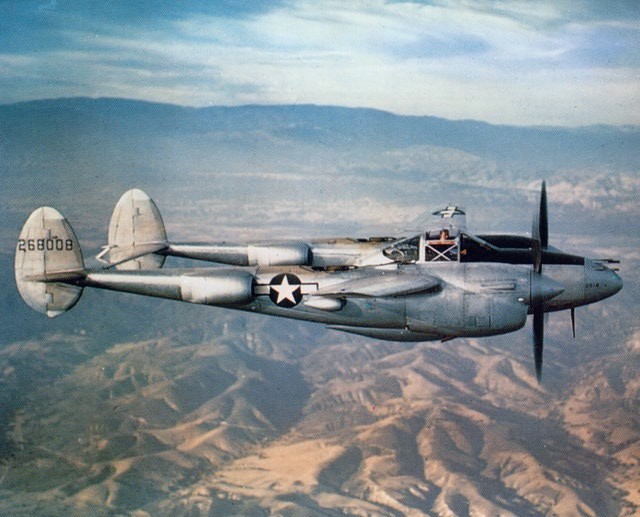
© 2019, Bryan R. Swopes
Wonderful expose of the famous plane, first come out of Lockeed Skunk Works. The “L” model saved my dad’s life off Mindoro Island Dec. 26, 1944.
To Mr Bryan R Swopes
re: Boeing 707-121 N708PA
I would like to ask your permission to publish the photograph of Boeing 707-121 N708PA taking off from Seattle-Tacoma Airport. I understand you hold the copyright for this photograph
With thanks
Mark Ashley
Mr. Ashley, Thank you for your inquiry. You will notice that the caption for the photograph reads: “Unattributed.” I located the photograph on the Internet, but do not know its original source. I do not hold the copyright.
UPDATE: Mr Ashley, your inquiry prompted another Internet search to see if i could determine the original source of the photograph. It appears to be a Boeing photograph, although the image I used seems to have been modified (cropped, lightened) from the original. Please see: http://www.boeingimages.com/archive/707-120-Landing-at-Seatac–2F3XC5LA0YM.html
UPDATE 2: No, I was incorrect. Although very similar, it is NOT the same photograph. The composition is very slightly different. Looking at the airplanes parked in front of the terminal in the background, it is apparent that the image which appears on TDiA was taken from a position very slightly to the left of the photographer who took the Boeing image listed in my previous “update.” Also, by comparing the position of the airliner, it becomes clear that N708PA is landing, rather than taking off. To summarize, I still do not know the source of the image of N798PA which appears in TDiA. It may be a Boeing photo, or that of a newspaper.
Great aircraft. Good Info in above text. Thanks. Had a friend who flew the P38 as instructor. Academy grad 44L.
I just love TDIA…I check it out every morning as I sip my first coffee.
Although I never flew the P-38 I recall several of my fellow Photo Survey pilots speak of the joy of flying this great machine in the 50’s and 60’s.
I always wondered why Lockheed changed prop rotation on production models. Torque and gyroscopic effect would naturally cancel each other out regardless of direction of rotation, but during single engine operation the prop rotation of production versions would cause more asymmetric thrust than the prototype. During single engine operation the the aircraft would be pitched up several degrees and the downward prop blade would create much more thrust than the upward blade. This would exacerbate asymmetric thrust and increase the aircraft’s VMC.
Would any of your fellow readers be able to explain why the prop rotation change?
Thank you Paul, you made my day. 🙂 That’s an interesting question. If I recall correctly, North American had to change the prop rotation on the P-82 Twin Mustang. . . Can any TDiA readers answer Paul’s question?
The Wikipedia article on the P-38 states that the direction of prop rotation was changed on production aircraft to increase stability as a gun platform. It doesn’t give any more detail than that. It would be interesting to know the physics of how that worked. As a pilot with lots of prop and jet time, I do understand the way a prop develops asymetric thrust with pitch angle.
Here’s the best explaination I could find of the prop rotation diiferences between the P-38 and P-82:
http://warbirdinformationexchange.org/phpBB3/viewtopic.php?f=3&t=36361
“MUSTANG DESIGNER: Edgar Schmued and the P-51” by Ray Wagner confirms that the P-82 wouldn’t lift off until the prop rotations were reversed.
Thanks for the excellent Blog!